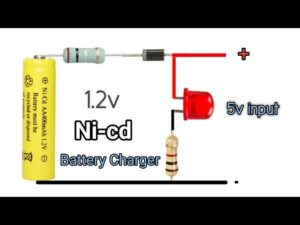When fully charged, what should a car battery charger read? It’s a question that many car owners ponder when it comes to maintaining the health and longevity of their battery. And today, we’re here to provide you with an answer. So, let’s delve into the world of car batteries and reveal the ideal reading for a fully charged battery. Understanding this crucial aspect will not only help you keep your battery in tip-top shape but also ensure a smooth and hassle-free ride. So, let’s set the wheels in motion and find out what should a car battery charger read when fully charged.
What Should a Car Battery Charger Read When Fully Charged?
Introduction
A car battery charger is an essential tool for any vehicle owner, as it ensures the battery remains charged and ready to start the engine. But have you ever wondered what a car battery charger should read when the battery is fully charged? Understanding this information is vital in avoiding overcharging or undercharging, which could both lead to battery damage. In this article, we will delve into the topic and explore the various aspects related to what a car battery charger should read when fully charged.
The Importance of a Fully Charged Battery
A fully charged battery is crucial for the optimal performance of your vehicle. It provides the electrical power required to start the engine, operate the lights, run the electronics, and power various other components. Having a fully charged battery ensures a smooth and reliable driving experience.
Understanding Battery Voltage
Battery voltage is an essential factor to consider when determining whether a car battery charger has fully charged your battery. The voltage represents the electrical potential difference between the positive and negative terminals of the battery. In simple terms, it is a measure of the battery’s energy capacity.
- A fully charged 12-volt battery should read around 12.6 to 12.8 volts.
- For a 6-volt battery, the fully charged reading should be approximately 6.3 to 6.4 volts.
It’s important to note that these readings may vary slightly depending on factors such as temperature and battery condition. However, the above values provide a general guideline for determining a fully charged battery.
How to Check Battery Voltage
To check the voltage of your car battery, you will need a multimeter, which is a versatile tool for measuring voltage, resistance, and current. Here’s a step-by-step guide on how to check your car battery voltage:
- Ensure your vehicle is turned off and the engine is cool.
- Locate the battery under the hood of your car.
- Set your multimeter to the DC voltage setting and select the appropriate scale (e.g., 20 volts).
- Identify the positive and negative terminals of the battery. The positive terminal is usually marked with a plus sign (+) or the letters “POS.”
- Connect the multimeter’s red probe to the positive terminal of the battery and the black probe to the negative terminal.
- Read the voltage displayed on the multimeter’s screen. This reading indicates your battery’s current voltage level.
Remember, if you are unsure about performing this procedure, it’s always best to consult a qualified professional.
Understanding the Charging Process
To comprehend what a car battery charger should read when fully charged, it’s essential to understand the charging process. When you connect a battery charger to your car battery, it supplies a controlled electrical current to replenish the battery’s energy.
Constant Voltage Charging
Most modern battery chargers use a technique called “constant voltage charging” to charge car batteries efficiently. This method involves applying a constant voltage to the battery while the charger monitors the current flow.
Charging Stages
The charging process typically consists of several stages, each designed to charge the battery effectively while avoiding overcharging. These stages include:
- Bulk Charging: This initial stage delivers a high current to rapidly charge the battery until it reaches approximately 80% of its capacity. During this stage, the battery voltage gradually rises.
- Absorption Charging: Once the battery voltage reaches a specific set point (around 14.4-14.8 volts for a 12-volt battery), the charger enters the absorption stage. At this point, the charger adjusts the voltage to maintain a constant level while slowly reducing the charging current. This stage ensures the battery reaches a full charge without overcharging.
- Float Charging: Once the battery is fully charged, the charger switches to float mode. The float voltage is lower than the absorption voltage and is designed to maintain the battery’s charge without overcharging it.
Charger Readings during the Charging Process
Understanding what a car battery charger should read at various stages of the charging process can help you determine the charging status. Let’s explore the readings you might encounter during charging:
Initial Connection
When you initially connect the charger to the discharged battery, the voltage reading might be significantly lower than the charger’s output voltage. This is because the charger is supplying the current required to charge the battery, which causes a voltage drop across the battery’s internal resistance.
Bulk Charging
During the bulk charging stage, the charger should read a voltage slightly higher than the battery’s current voltage. This higher voltage compensates for the voltage drop caused by the battery’s internal resistance. For example, if your battery reads 11.9 volts, the charger might display around 12.4-12.6 volts during bulk charging.
Absorption Charging
In the absorption charging stage, the charger should read a constant voltage within the specific range mentioned earlier (around 14.4-14.8 volts for a 12-volt battery). This voltage level should remain relatively stable as long as the battery requires further charging.
Float Charging
During float charging, the charger should read a voltage lower than the absorption voltage, typically around 13.2-13.4 volts for a 12-volt battery. This lower voltage prevents overcharging while maintaining the battery’s charge level.
Indications of a Fully Charged Battery
Apart from the charger readings, there are a few additional indicators that can help determine if your battery is fully charged:
- Charger Display: Most modern battery chargers are equipped with built-in indicators or displays that signal a fully charged battery. These indicators may include LED lights or specific messages on the display.
- Charger Behavior: Some chargers automatically switch to a maintenance or trickle charge mode when the battery is fully charged. This behavior indicates that the battery has reached its optimal charge level.
- Hydrometer Test: If you have access to a hydrometer, you can use it to measure the specific gravity of the battery electrolyte. A fully charged battery will have a specific gravity reading close to the manufacturer’s specifications.
Important Safety Precautions
When dealing with car batteries and chargers, it is crucial to prioritize safety. Here are a few essential safety precautions to follow:
- Always read and follow the manufacturer’s instructions for your battery charger.
- Ensure proper ventilation in the charging area to avoid the accumulation of potentially explosive gases released by the battery.
- Wear appropriate personal protective equipment, such as safety goggles and gloves, when working with batteries.
- Avoid smoking or exposing naked flames near the battery or charging area.
- Never connect or disconnect the charger while it is plugged into an electrical outlet.
Understanding what a car battery charger should read when fully charged is essential for maintaining the health and longevity of your battery. The voltage readings during different charging stages provide valuable information about the battery’s charge level and the charger’s operation. By monitoring these readings and following the manufacturer’s instructions, you can ensure your battery remains charged optimally and ready to power your vehicle reliably. Remember to prioritize safety when working with car batteries and chargers to prevent accidents or damage to your vehicle.
Frequently Asked Questions
What voltage should a fully charged car battery read on a battery charger?
A fully charged car battery should read around 12.6 to 12.8 volts on a battery charger. This indicates that the battery has reached its maximum charge and is ready to be used.
Why is it important to check the voltage of a car battery when charging?
Checking the voltage of a car battery when charging is important because it helps determine the battery’s state of charge. By monitoring the voltage, you can ensure that the battery is being properly charged and avoid overcharging, which can damage the battery.
Can a car battery charger indicate when the battery is fully charged?
Yes, some car battery chargers are equipped with indicators or displays that show when the battery is fully charged. These indicators may include lights, digital readouts, or audible alerts to let you know when the battery has reached its maximum charge.
What if the car battery charger reads a voltage higher than 12.8 volts when fully charged?
If the car battery charger reads a voltage higher than 12.8 volts when the battery is fully charged, it may indicate that the charger is providing an excessive charge. This can lead to overcharging the battery, which can reduce its lifespan. It is recommended to use a charger with a proper voltage regulation system to avoid such issues.
Is it possible for a car battery to be fully charged but still have a low voltage reading?
Yes, it is possible for a car battery to be fully charged but still have a low voltage reading. This can happen if the battery has a high internal resistance or if there is a voltage drop across the battery terminals or cables. In such cases, it is recommended to have the battery tested to ensure its health and performance.
Final Thoughts
When your car battery charger is fully charged, it should read around 12.6 to 12.8 volts. This indicates that the battery has reached its maximum charge and is ready to be used. It is important to note that this reading may vary slightly depending on the charger and battery type. To ensure your battery is fully charged, it is recommended to use a digital multimeter to measure the voltage accurately. By understanding what the car battery charger should read when fully charged, you can effectively maintain your vehicle’s battery and ensure its longevity.




